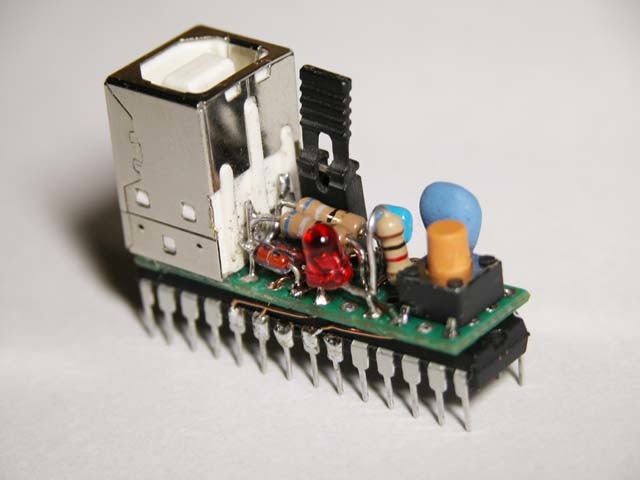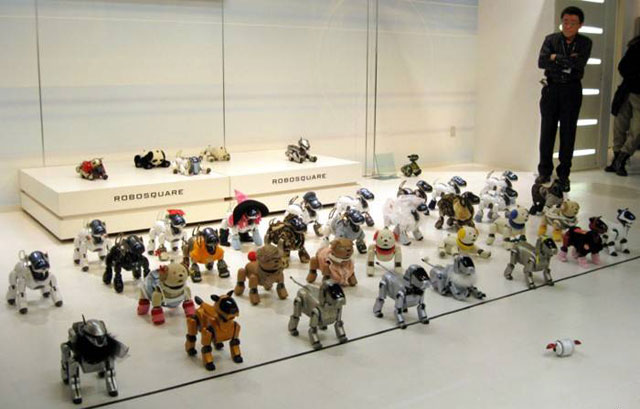Robots grow out of toy age

From time immemorial, mankind has dreamed of man-made assistants who would work instead of him; The well-known principle “laziness is the engine of progress” is especially relevant here. As time went on, the possibilities of people increased. They have already started talking about artificial intelligence - in the hope of downloading robots not only with physical, but also with mental work. Has the cart gone far in these directions? What features do commercial robot models have? And at the same time, how did this post get on the Intel blog? Let's try to answer all the questions.
Present day
So, what have robots achieved today? Since this category of devices is very diverse in characteristics and applications, the easiest way to answer this question is to give examples of the most successful and successful developments.
No, this is not a train, but quite a working Arduino
In recent years, in the mobile robotic devices segment, the Arduino platform has become widely known, combining a central controller and a harness for interfacing with the periphery - sensors, engines, and so on; habrospetsialisty also paid enough attention to it (here is the freshest post on this topic) On the Arduino construct a variety of moving vehicles: driving, flying and floating; a lot more and everything is not moving, but for us it is not so interesting now. The development environment allows you to program the behavior of the device and customize the interaction of its components. Arduino attracts thousands of fans primarily because it is a designer not only in hardware but also in software: the available modules and libraries greatly simplify working with it.
')

A flock of robotic vacuum cleaners headed by a leader
You will probably laugh, but it is precisely the robot vacuum cleaner that is now the most commercially successful robotic device in the world. And if, without laughing, to think, then there is nothing surprising in this, because a vacuum cleaner is really a really necessary thing among the rest of semi-and entirely toys. The mental abilities of devices like iRobot are not particularly great - sometimes they are not even enough to perform directly vacuum functions. For example, vacuum cleaners can easily get lost among furniture legs; that is, they have enough minds to climb, but to get out is no longer. So there is plenty of room for evolution.

Another pack. Or a pack. Although, rather, the chorus, because they sing.
Sony AIBO represents, perhaps, the most popular project of a home robot. Despite the fact that the AIBO dogs are no longer produced, they are still in demand; there is no doubt also that they have influenced the entire industry of robot toys. The advantages of AIBO are a huge number of sensors of everything (which, however, did not prevent the dog from falling off the table), sophisticated development algorithms with branching (as in a good strategic game), well, and overall, of course. In terms of imitation of reality, Sony engineers have surpassed themselves, especially considering that the development was conducted at the end of the last century. However, the project was closed, which definitely symbolizes.
Perspectives
Studying the participants of our hit parade and related models, we can draw conclusions about the situation in the industry as a whole. First of all, it is striking that most of the “home robots” are nothing more than toys, moreover, toys for geeks. In itself, this is not terrible, but it severely limits both the requirements for the product and the development budget. Of course, robots, helicopters must exist, and in large numbers, because fun. And vacuum cleaners, too, as needed. But to call robots is still a bit of a different kind of device. Those that bring real benefits, whose artificial “mind” is aimed at self-programming, creation, and not at imitation. What problems are encountered in the development of such robots?
OpenROV - open source submarine
The history of AIBO showed the commercial vulnerability of serious robot-based projects, but this problem is not as great as it may first appear. A good option for software development would be to create a development team under the auspices of Open Source. And what to do with the platform? Here, indeed, there are difficulties. It is clear that it is impossible to expect a miscalculation of complex adaptive reactions and active branching of the behavior algorithm from an Arduino controller with an operating frequency of up to 20 MHz. The 700 MHz RISC AIBO processor made it possible to fairly simulate development and respond to events. But the question here is not only in megahertz and gigabytes. A serious project should provide a high-quality development environment and the possibility of writing programs in high-level languages, without which it is impossible to program the system as a whole.
What did we get? Instead of a chip with a motor, we have a computer with legs. Well, or without legs, as it will. The main thing is that the computer has a standard architecture, a standard software platform and is programmed with standard development tools. Instead of the task of piloting an exotic pepelats, we reduced everything to routine programmer work — let no one be offended by the word “routine”.
Things are easy - to create a standard architecture robot and equip it with mind hares. As you understand, such robots already exist, otherwise there would be no point in writing this article. And they are built - SURPRISE! - on the Intel platform.
Q.bo, NAO and so on
Our first hero is a green man on wheels called Q.bo. From a computer point of view, this is a PC with a mini-ITX motherboard, an Intel Atom or Core i3 processor, and everything else you need. Pairing with the motor skills and sensors know all the same Arduino-compatible controllers. Managed by Q.bo operating system OpenQbo (Linux Ubuntu clone with an integrated software package for the system). By the way, this very package as a separate product ROS is ported for a number of operating systems, they say, even Windows works.What success Q.bo will achieve is impossible to say, its sales will begin only in September, the cost will start from 800 pounds. However, it can definitely be argued that Q.bo, while remaining a toy, will become fun after all a new level. This is not a black box, like AIBO, but an intellect, the possibilities of which you yourself are laying and training. A powerful hardware platform allows you to lay sophisticated and believable responses to reality. Add here a variety of buns inherited by Q.bo from the PC world: a simple software update mechanism, the ability to repair and upgrade, drivers for various peripherals and adapters, etc.
But the robot NAO , the development of the company Aldebaran Robotics, with all its frivolous appearance can not be called a toy; It is intended mainly for scientific and medical purposes. Like Q.bo, it is controlled by Linux, the implementation of specific functions is assigned to the NAOqi software package. The hardware is headed by two Intel Atom processors, there is a rich set of sensors and motors.

Two people and NAO. Robot in the middle
Despite its high cost (about $ 15,000), NAO is already used in many foreign educational institutions: it helps to study mathematics, programming, engineering disciplines. With the help of NAO, researchers study the features of recognizing objects and voices, the movement of a person’s body. Finally, pilot social programs of the robotic future are tested on NAO: robots learn to help elderly people, children suffering from mental disorders, such as autism, and so on.
What can be said in conclusion? Probably stupid to argue, do we need robots in our lives. They are already everywhere: any modern device, from a refrigerator to a car, is more or less equipped with intellectual functions. Obviously, the overall intelligence of devices will only grow further. Perhaps the robot does not need legs, and you can talk, say, with the TV. However, the elements of artificial intelligence are still difficult to develop, and you need to deal with them with all your might and the whole world. Things are easy - choose a robot you like and go forward, be creative! Robot with Intel inside, of course.
Source: https://habr.com/ru/post/149268/
All Articles